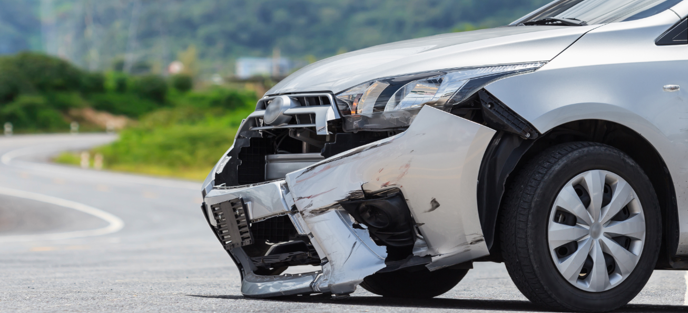Bumper Damage After a Car Accident
What Happens After a Car Collision?
Even a minor fender bender can lead to more damage than you think. One moment you're backing out of a parking space; the next, your bumper is scuffed, misaligned, or cracked. While the issue may seem minor, bumpers are essential safety components.
Car bumpers help shield vital systems such as headlights, radiators, grilles, and sensors. Understanding what happens after a car collision can help prevent small issues from turning into expensive collision repairs.
The Importance of Car Bumpers
Bumpers are your vehicle’s first line of defense in a collision. From protecting headlights and grilles to safeguarding parking sensors, a bumper does more than enhance appearance—it plays a direct role in minimizing injury and vehicle damage during a collision. They're engineered to absorb and redistribute impact forces, reducing the shock transmitted to critical systems like the engine, radiator, and even the passenger cabin. That’s why it's critical to inspect your bumper after any impact, no matter how minor it seems. Taking early action could help preserve vehicle safety, protect valuable electronics, and ensure insurance claims are handled properly.

When to Repair or Replace a Bumper
Not all bumper damage warrants a full replacement—but some signs should never be ignored. Knowing the difference between cosmetic wear and structural compromise can save you both money and risk. Bumpers typically conceal internal components like crash beams and sensors. Even if damage appears surface-level, these hidden systems could be affected. Here's how to assess the damage:
1. Minor Damage – Cosmetic Fixes
In the aftermath of a minor car accident, surface-level issues like small dents, scratches, or paint scuffs may appear on your bumper. When the minor rear bumper damage doesn’t affect the structural integrity or fit of the bumper, quick DIY solutions can be a cost-effective option. You can often address these cosmetic issues using:
- DIY bumper repair kits
Great for small dents or cracks, these kits include fillers and tools to smooth out the surface before painting.
- Touch-up paint or Spray Can Paint
Ideal for minor chips and scratches. Touch up bottles help prevent rust and restore the original look. Spray paints provide wider coverage for scuffed areas. Multiple light coats can blend damage into the rest of the bumper. Learn more here.
These quick fixes are ideal for minor damage and can help you avoid unnecessary repair shop visits. However, it's essential to distinguish between purely cosmetic flaws and deeper structural damage. Identifying the difference can save you money and reduce safety risks down the line.
2. Moderate Damage – Replaceable Parts
If your bumper is cracked, detached, or warped, replacing the bumper cover might be the most effective solution. This typically involves:
- Removing the damaged cover
- Installing a new OEM or aftermarket bumper
- Painting the bumper to match your car’s finish
To simplify this process, Bumpers.com offers painted-to-match bumpers, helping you skip the hassle of coordinating with a third-party paint shop. This not only saves time but also ensures a consistent finish that blends flawlessly with your vehicle.
3. Major Damage – Structural Compromise
If the damage extends beyond the cover to the internal support system, it's time to consider full replacement. Indicators include:
- Severe bending or multiple cracks
- Dashboard alerts from parking or collision sensors
- Exposed foam, beams, or metal beneath the cover
- History of prior repairs that weakened the bumper’s strength
If you're unsure about the extent of damage after a collision, consult a trusted collision repair specialist. They can assess hidden or structural issues beneath the surface—such as frame misalignment, sensor damage, or compromised safety components—before you decide whether to repair or replace your bumper.
Insurance Considerations
After an accident, one of the first questions is: Does insurance cover bumper damage? The answer depends on your coverage type, deductibles, and the nature of the damage.
In general, some drivers may have protection under policies that include collision or comprehensive coverage, but what’s covered (and how much is reimbursed) often depends on multiple factors, including the type of damage and applicable deductibles.
While cosmetic damage (like minor scrapes or scratches) may not always be eligible for coverage, more extensive or structural damage might be. The best course of action is to review your policy documents carefully and speak directly with your insurance provider to understand your specific benefits and limitations.
Where to Buy the Right Bumper
Once you've evaluated the damage and your insurance options, the next step is finding a replacement that fits your car and your budget. That’s where Bumpers.com comes in.
Why Choose Bumpers.com?
- OEM & Aftermarket Options – Get the right fit for your make, model, and year.
- Painted Bumpers – Match your vehicle’s color with our OEM paint to match options for a seamless attachment and eliminate body shop delays.
- Spray Paint & Accessories – Touch up or detail your car with the right products for minor scratches.
